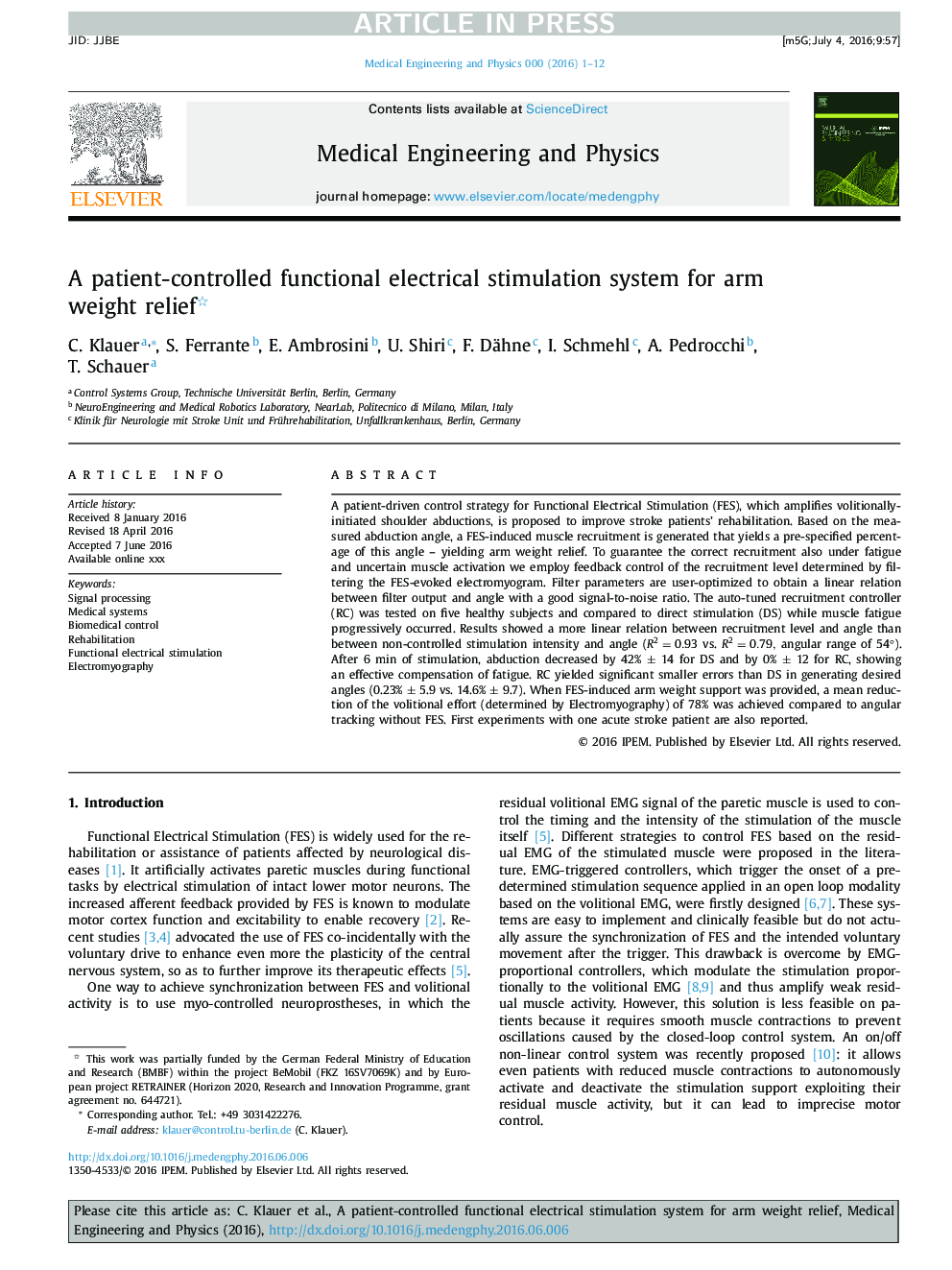| Article ID | Journal | Published Year | Pages | File Type |
|---|---|---|---|---|
| 5032840 | Medical Engineering & Physics | 2016 | 12 Pages |
Abstract
A patient-driven control strategy for Functional Electrical Stimulation (FES), which amplifies volitionally-initiated shoulder abductions, is proposed to improve stroke patients' rehabilitation. Based on the measured abduction angle, a FES-induced muscle recruitment is generated that yields a pre-specified percentage of this angle - yielding arm weight relief. To guarantee the correct recruitment also under fatigue and uncertain muscle activation we employ feedback control of the recruitment level determined by filtering the FES-evoked electromyogram. Filter parameters are user-optimized to obtain a linear relation between filter output and angle with a good signal-to-noise ratio. The auto-tuned recruitment controller (RC) was tested on five healthy subjects and compared to direct stimulation (DS) while muscle fatigue progressively occurred. Results showed a more linear relation between recruitment level and angle than between non-controlled stimulation intensity and angle (R2=0.93 vs. R2=0.79, angular range of 54°). After 6 min of stimulation, abduction decreased by 42% ± 14 for DS and by 0% ± 12 for RC, showing an effective compensation of fatigue. RC yielded significant smaller errors than DS in generating desired angles (0.23% ± 5.9 vs. 14.6% ± 9.7). When FES-induced arm weight support was provided, a mean reduction of the volitional effort (determined by Electromyography) of 78% was achieved compared to angular tracking without FES. First experiments with one acute stroke patient are also reported.
Keywords
Related Topics
Physical Sciences and Engineering
Engineering
Biomedical Engineering
Authors
C. Klauer, S. Ferrante, E. Ambrosini, U. Shiri, F. Dähne, I. Schmehl, A. Pedrocchi, T. Schauer,
